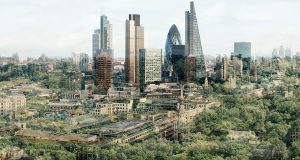Evolving Horizons: Commercial Real Estate in Transition
Commercial real estate is in a state of perpetual transition, adapting to the shifting tides of business needs, investment strategies, and societal trends. In this article, we journey through the dynamic landscape of commercial real estate, shedding light on the transitions that are shaping its evolution. We will uncover the driving forces behind these shifts, explore the emerging opportunities, and provide strategies for success in this ever-changing world of commercial properties.
The Dynamic Forces of Commercial Real Estate
Redefining Workspaces: The Age of Flexibility
The conventional office space is no longer the norm. The rise of remote work and flexible arrangements has led businesses to seek versatile, community-driven workspaces. Co-working spaces and shared offices are on the ascendancy, offering cost-effective solutions with modern amenities.
E-commerce Revolution: Transforming Retail and Warehousing
The e-commerce boom is reshaping the commercial real estate landscape. Warehouses, distribution centers, and last-mile delivery hubs are now integral components of the industry. The surge in online shopping continues to redefine the retail sector and influences the demand for physical retail spaces.
Sustainability and Well-being: The New Imperatives
Sustainability and well-being have transcended trends; they are now essential aspects of commercial real estate. Eco-friendly buildings, energy-efficient designs, and health-conscious workplaces not only attract tenants but also align with regulatory requirements and cater to the conscientiousness of investors.
Emerging Trends and Opportunities
Tech-Powered Transformations
The integration of technology is vital in commercial properties. Smart buildings, IoT integration, and data-driven management systems enhance efficiency, reduce operational costs, and heighten the overall desirability of properties.
Mixed-Use Developments
Mixed-use developments, blending residential, retail, and office spaces, are gaining momentum. These create vibrant, walkable communities that cater to the preferences of the modern workforce while maximizing property value.
Adaptive Reuse
Repurposing older buildings for contemporary uses is both cost-effective and environmentally responsible. Adaptive reuse preserves historical and architectural value and appeals to businesses seeking unique and character-rich spaces.

Strategies for Success
Market Intelligence
Staying informed about market trends, economic indicators, and local demand is essential. Comprehensive research informs investment decisions and helps identify opportunities in emerging areas.
Diversification
Mitigating risk through diversification is crucial. Consider a mix of property types and geographic locations to spread investments across various sectors.
Sustainability and Innovation
Embracing sustainability and innovative technologies can enhance the desirability and value of commercial properties. Investments in energy-efficient upgrades and green building certifications can attract eco-conscious tenants.
Adaptability
In a dynamic market, adaptability is paramount. Be ready to adjust your strategies in response to evolving trends, whether it involves repositioning a property or exploring new sectors.
Conclusion
Commercial real estate is in constant transition, shaped by the ever-changing needs of businesses and the transformative impact of technology. To succeed in this dynamic landscape, one must remain agile, forward-thinking, and attuned to emerging trends. Navigating the transition of commercial properties is about understanding the forces at play and embracing the opportunities they bring.



